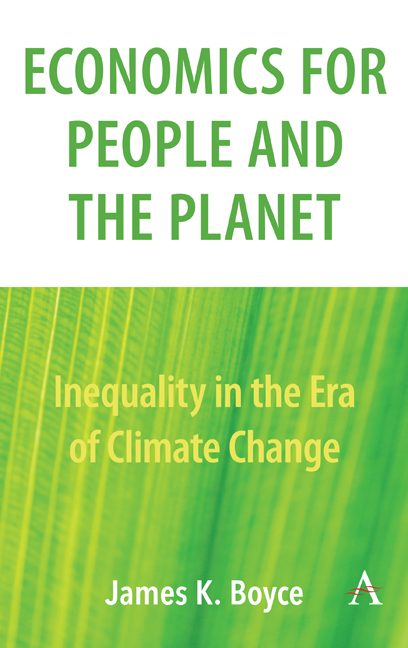Book contents
- Frontmatter
- Contents
- List of Illustrations
- Acknowledgements
- Part I Rethinking Economics and the Environment
- Part II Environmental Injustice
- Chapter 9 Inequality and the Environment
- Chapter 10 Clean Air for All
- Chapter 11 Letter from Flint
- Chapter 12 Let Them Drink Pollution?
- Chapter 13 Letter from Delhi
- Chapter 14 Mapping the Environmental Riskscape
- Chapter 15 Measuring Pollution Inequality
- Chapter 16 Cleaning the Air and Cooling the Planet
- Part III Climate Policy
- Notes
- Publication History
- Index
Chapter 13 - Letter from Delhi
from Part II - Environmental Injustice
Published online by Cambridge University Press: 12 February 2019
- Frontmatter
- Contents
- List of Illustrations
- Acknowledgements
- Part I Rethinking Economics and the Environment
- Part II Environmental Injustice
- Chapter 9 Inequality and the Environment
- Chapter 10 Clean Air for All
- Chapter 11 Letter from Flint
- Chapter 12 Let Them Drink Pollution?
- Chapter 13 Letter from Delhi
- Chapter 14 Mapping the Environmental Riskscape
- Chapter 15 Measuring Pollution Inequality
- Chapter 16 Cleaning the Air and Cooling the Planet
- Part III Climate Policy
- Notes
- Publication History
- Index
Summary
The people of Delhi, India, young and old, rich and poor, are exposed to some of the world's worst air pollution. But not all are harmed equally, and not all are equally to blame.
Arriving in Delhi in January, at the height of the winter pollution season, you notice the air as soon as you step off the plane. A pungent smell with hints of burning rubber and diesel fumes assaults the nose and stings the eyes. On the highway into the city center, a digital screen shining through the smog displays the current level of suspended particulate matter. You don't need to understand the numbers to know it's bad.
Delhi has extensive parks, broad avenues, beautiful buildings and a vibrant culture. But casting a pall–quite literally–over it all is the worst air pollution of any major city in the world.
I lived in Delhi in spring 2015, accompanying my wife who had a research fellowship there. I brought along work to do on air pollution inequality in the United States. For the first week, we stayed in a guesthouse near the centre of town. One night I was awakened around 2:00 a.m. by the acrid smell of pollution. To get back to sleep, I had to slip on an N95 pollution mask (at the suggestion of a doctor friend, I'd brought some with us).
In the morning it struck me that it would be absurd to devote all my time in Delhi to working on US air pollution while ignoring the far higher levels around me. In an environmental twist on the spiritual maxim, ‘be here now’, I resolved to educate myself about Delhi's air pollution and investigate what can be done about it.
One of the most dangerous air pollutants is particulate matter. In Delhi it comes from multiple sources, including diesel trucks that are allowed to pass through the city in the middle of the night, rapidly growing numbers of passenger vehicles, coal-burning power plants and brick kilns that ring the city, construction debris and open burning of wastes. Particulates are measured by an Air Quality Index (AQI). An AQI below 50 is considered ‘good’.
- Type
- Chapter
- Information
- Economics for People and the PlanetInequality in the Era of Climate Change, pp. 59 - 64Publisher: Anthem PressPrint publication year: 2019



